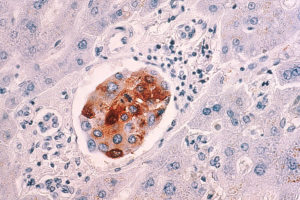For cancer survivors, it can become a crippling question: What if my cancer comes back?
A new study shows young women whose breast cancer has metastasized, or spread to other, more distant parts of the body, are living almost twice as long as women who were diagnosed 25 years ago.
The estimate was based on diagnoses made between 1992 and 1994 and between 2005 and 2012.

“We estimate a two-fold increase in five-year relative survival rate from 16 percent to 36 percent, for women diagnosed at age 15 to 49,” the researchers reported in their abstract.
The takeaway? Even with dreaded metastasis, the most severe form of cancer, time should be spent living instead of worrying. Survival rates are improving.
The research was published in Cancer Epidemiology, Biomarkers & Prevention.
The study team included Angela Mariotto, chief of the Data Analytics Branch of the Division of Cancer Control and Population Sciences at the National Cancer Institute, as well as co-authors from the Metastatic Breast Cancer Alliance and Fred Hutchinson Cancer Research Center.
Should Mammograms Begin Sooner?
They found that the number of women living with metastatic breast cancer in America increased by 17 percent from 2000 to 2010. They estimate that as of January of 2017, more than 150 American women were living with metastatic breast cancer, with three in four initially having been diagnosed with an earlier stage.
Median survival time increased to more than three years from 2005 to 2012 among women diagnosed between ages 15 and 49. It increased to two and a half years for women diagnosed between ages 50 and 64.
Related: Strawberries Found to Knock Down Breast Cancer in Mice
The findings seem to underscore the importance of even earlier detection than what is widely recommended.
Most insurance plans pay for annual mammograms beginning at age 40, according to the U.S. Centers for Disease Control and Prevention. The American Cancer Society recommends annual breast cancer screenings begin at age 45. After 50, the U.S. Preventive Services task force says every two years is appropriate.
Cancer Recurrence Not Well Tracked
The new research involved complicated computations. “To estimate the number of U.S. women living with metastatic breast cancer, the researchers applied a back-calculation method to breast cancer mortality and survival data from the SEER program,” the National Cancer Institute explained in a news release.
SEER is an acronym for the institute’s Surveillance, Epidemiology, and End Results Program.
Related: Teen Creates Bra That Detects Breast Cancer
“Collecting recurrence data has been challenging for cancer registries because recurrence can be diagnosed through diverse methods and in a variety of locations,” the institute explained.
The institute is now funding pilot studies aimed at better using the data and technology at scientists’ disposal for such uses.
“These findings make clear that the majority of metastatic breast cancer patients, those who are diagnosed with non-metastatic breast cancer but progress to distant disease, have never been properly documented,” Dr. Mariotto said.
A professional journalist nearly 30 years, David Heitz started his career at the Quad-City Times in Davenport, Iowa before moving to Los Angeles. He led the Glendale News-Press to best small daily newspaper in the state (CNPA) as managing editor and also worked as executive news editor of the Press-Telegram. He worked briefly as deputy news editor of the Detroit News before returning to the Quad-Cities, where he has worked as a freelance medical writer since 2012 for several national websites. He recently purchased his childhood home and says he truly is “living the dream.”


![How To: ‘Fix’ Crepey Skin [Watch]](https://cdn.vitalupdates.com/wp-content/uploads/2017/05/bhmdad.png)












